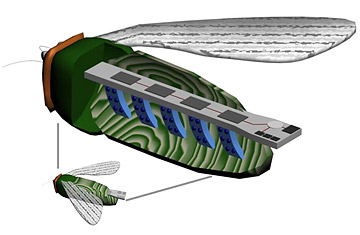A village in south-west England will shortly be swarming with robots competing to show off their surveillance skills.
The event is the UK Ministry of Defence’s (MoD) answer to the US DARPA Grand Challenge that set robotic cars against one another to encourage advances in autonomous vehicles.

Enlarge image
This village, built for urban warfare training during the Cold War, will host teams of ground-based and aerial robots hunting for snipers, bombs, and other threats (Image: MoD)
The MoD Grand Challenge is instead designed to boost development of teams of small robots able to scout out hidden dangers in hostile urban areas.
Over 10 days in August, 11 teams of robots will compete to locate and identify four different threats hidden around a mock East German village used for urban warfare training, at Copehill Down, Wiltshire (see image, top right).
The robots must find snipers, armed vehicles, armed foot soldiers, and improvised explosive devices hidden around the village, and relay a real-time picture of what is happening back to a command post.
Read moreEnglish village to be invaded in spybot competition


